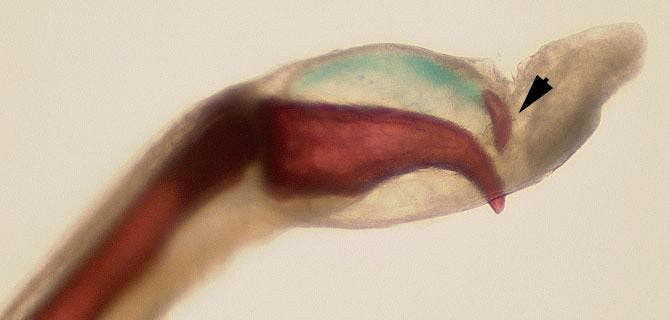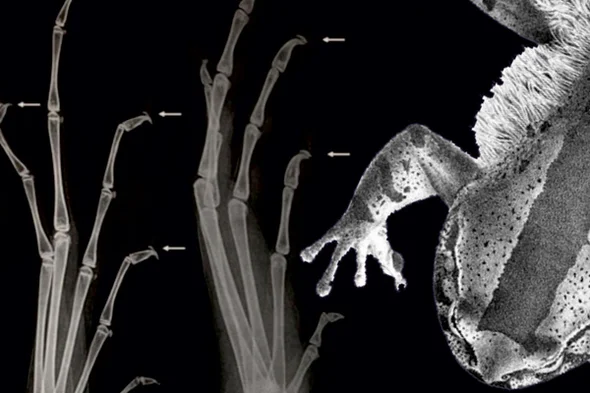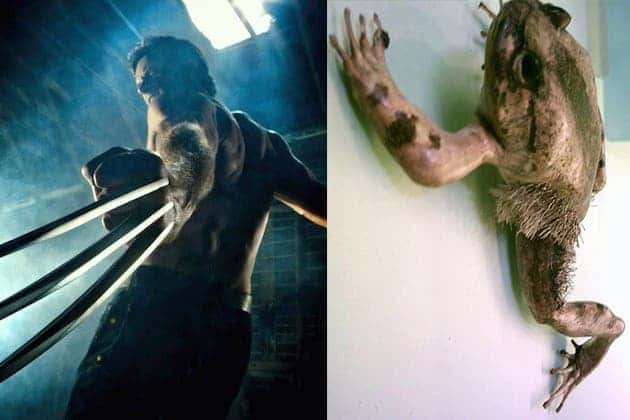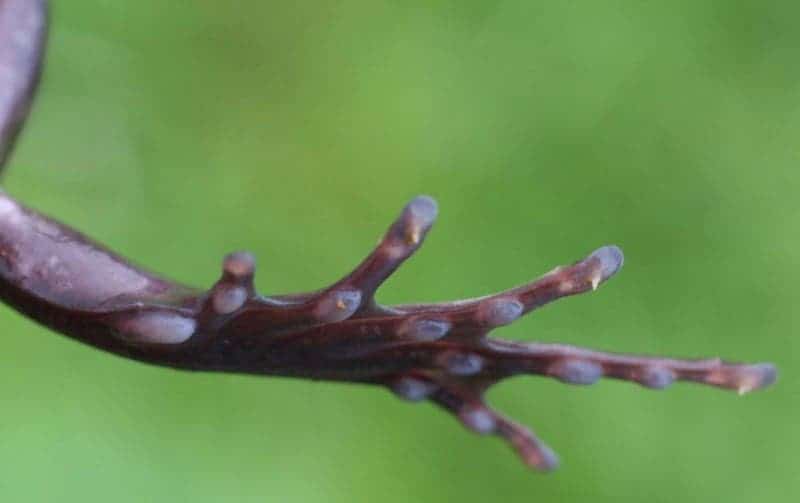In Cameroon, some frogs are nothing like the benign variety we’re used to. If you’re a predator, you sure don’t want to mess with Trichobatrachus robustus — a hairy frog species that, when cornered, will go as far as breaking its own bones to unleash a hidden ace up its sleeve. Puncturing right through its toes are sharp claws which the frogs use as a last line of defense. T. robustus can be quite dangerous, which is why Cameroonian hunters use long spears and machetes to kill the frogs for food and to avoid being cut.
A closer look at the Wolverine frog
Males of T. robustus, also known as the “horror frog” or “wolverine frog”, have hair-like structures on the body and thighs during the breeding season. But these aren’t just hair strands — they’re in fact dermal papillae which contain numerous blood vessels that are thought to function a bit like a fish’s gills. These structures help the frogs intake more oxygen through their skin while they nurse their brood.

But their most interesting feature is the claws found in the hind feet only, nestled inside a mass of connective tissue. These claws, which are entirely made of bone and not collagen, are connected at one end to a muscle. When the animal is attacked, it contracts this muscle pulling the claw downward. The sharp end breaks away from the bony tip, cutting right through the toe pad and emerging on the underside. According to zoologist David Wake, at the University of California, Berkeley, this approach to defense appears to be unique in the animal kingdom, although the Otton frog (Babina subaspera) possesses a similar “spike” in its thumb.
Alternatively, male frogs may use their claws to grab onto rocks and other surfaces and climb on them. Hairy frogs are carnivores who primarily eat insects and mollusks, like slugs and snails. However, they don’t use their claws for predation.

No one has ever seen a horror frog retract its claws, and since there are no muscles that could put them back inside researchers think these are nonretractable. Once out, they stay out. But this isn’t a certainty, since amphibians can be quite surprising. Generally, amphibians heal fairly quickly so tissue might be restored.
Despite their fierce nature, the Wolverine frog is facing conservation concerns. The rapid destruction of Cameroon’s rainforests due to logging, farming, and mining is threatening the frogs’ habitats. In addition, the pet trade is also posing a threat to the species’ survival. The animals are also hunted by the Bakossi people of Cameroon who traditionally believe that the frogs fall from the sky and, when eaten, help childless human couples become fertile.
Researchers are currently working with local conservation groups to raise awareness about the importance of preserving Cameroon’s rainforests and the animals that call them home. They are also calling for stricter regulations on the pet trade to prevent the illegal collection and sale of frogs.








